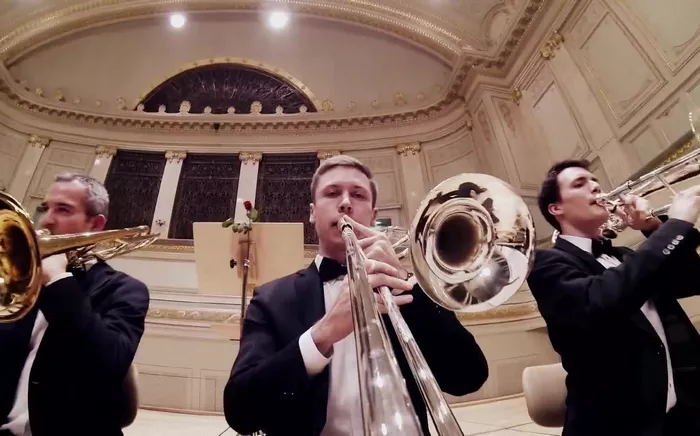When it comes to the world of brass instruments, versatility is key. Musicians often find themselves presented with opportunities to play different parts or fill in for missing members of an ensemble. One question that frequently arises is whether a bass trombone can effectively play tuba parts. While these instruments have distinct differences, they also share some similarities, making it possible for a skilled bass trombonist to tackle tuba lines when needed. In this article, we’ll explore the characteristics of both the bass trombone and the tuba, examine their similarities and differences, and discuss the techniques and considerations involved in adapting between the two.
Understanding the Bass Trombone
Before we delve into the compatibility of the bass trombone with tuba parts, let’s take a closer look at the instrument itself. The bass trombone is a member of the trombone family, known for its deep, rich sound. It is larger and heavier than the tenor trombone, featuring two valves that allow for additional tubing, resulting in a lower pitch. Typically, the bass trombone is pitched in either F or B♭, with the B♭ version being the most common.
Examining the Tuba
The tuba, on the other hand, is a distinct brass instrument known for its powerful and resonant bass tones. It belongs to the low brass family and comes in various sizes and shapes, including the BB♭ tuba, CC tuba, and others. The tuba’s primary function is to provide the fundamental bass notes in an ensemble, serving as the anchor for the entire brass section.
Tubas are commonly found in symphony orchestras, concert bands, and brass bands, but they also feature prominently in jazz and contemporary music. Their unique sound and role make them an indispensable part of many musical compositions, especially in pieces that require a deep, grounding presence.
The Overlapping Qualities
While the bass trombone and tuba have distinct characteristics, they share several qualities that can facilitate the adaptation of a bass trombonist to tuba parts:
1. Range:
Both instruments cover the lower end of the musical spectrum, with the bass trombone’s lower register overlapping with the tuba’s range. This means that many tuba parts can be comfortably played on a bass trombone.
2. Tone Production:
The bass trombone and tuba require similar techniques for producing a full, resonant tone. Musicians must use their embouchure and air support effectively to generate the desired sound.
3. Breathing:
Proper breath control is crucial for both instruments. Musicians must develop strong lung capacity and control to sustain long, low notes on both the bass trombone and tuba.
4. Articulation:
The articulation techniques used on the bass trombone can be adapted to tuba playing. This includes legato (smooth and connected) and staccato (short and detached) playing.
5. Transposition:
Bass trombonists are often required to transpose music, which involves reading music written in one key and playing it in another. This skill is valuable when tackling tuba parts written in different keys.
Challenges and Considerations
While it is possible for a bass trombonist to play tuba parts, there are challenges and considerations to keep in mind:
1. Instrument Differences:
The bass trombone and tuba have different physical characteristics, including size, weight, and valve mechanisms. Adapting to these differences may require some adjustment in technique and handling.
2. Reading Bass Clef:
Tuba parts are typically written in bass clef, while trombonists often read music in tenor clef. Bass trombonists should be proficient in reading bass clef to play tuba parts accurately.
3. Tuba Specific Techniques:
Some tuba techniques, such as extreme pedal tones and unique articulation, may require additional practice and familiarity for a bass trombonist.
4. Mouthpiece Differences:
The mouthpieces of the two instruments are different in size and shape, which can affect tone production and embouchure. Some musicians may choose to use a tuba mouthpiece on their bass trombone when playing tuba parts.
5. Transposition Challenges:
While transposition is a shared skill, it can still be a challenge when switching between instruments, especially in a performance setting where quick transitions are required.
See Also: Mastering Trombone Slide Positions: A Step-By-Step Guide
Conclusion
In conclusion, while there are distinct differences between the bass trombone and tuba, the overlapping qualities and similarities in technique make it possible for a skilled bass trombonist to play tuba parts when needed. Adaptation may require some adjustments in technique, reading skills, and instrument handling, but with dedication and practice, it can be a rewarding endeavor.


